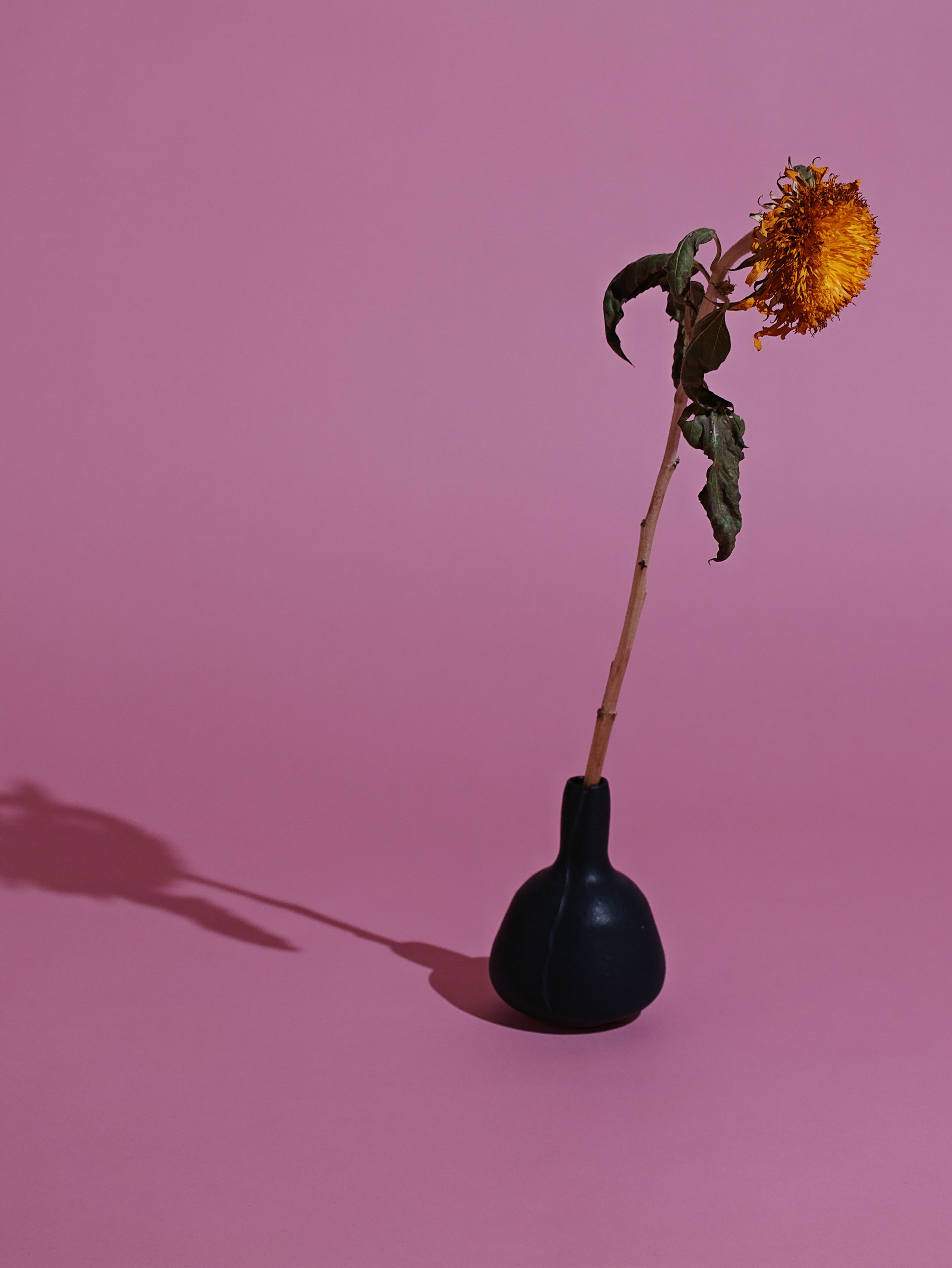私の「欲望 Series」は、対照的な要素の組み合わせを通じて、人間の深層心理に潜む根源的な「欲望」、そしてそれに紐づく「死生観」や「執着」、さらには「生死に関わる文化的慣習」を視覚的に探求する作品群です。私は「欲望」を、生命の根底にある**「生への執着」**として定義し、その中には睡眠欲、食欲といった本能的な衝動から、社会的な「見栄」に至るまで、人間の多種多様な欲求が含まれると考察しています。
このシリーズの中心には、「死」と「人間存在」の象徴としての真っ白な骨が配置されます。骨は生命の終焉を示すと同時に、自然が生み出した完璧な造形美をも内包します。この無機質な骨に縄を絡ませることで、人間の持つ欲望が具象化されます。 縄の形状や絡み方は、これらの多様な欲望が、生命の有限性や虚無感とどのように結びつき、あるいはそこから発生するのかという問いかけを表現しています。
作品の背景には、美しい花や風景が広がり、これは**「世界は美しい」という普遍的な概念**を象徴しています。この美しい構図の中に骨と縄を配置することで、私はその美しさの奥底に、人間の飽くなき欲望や執着が常に潜んでいることを暗示します。例えば、葬儀において花を飾る行為に、故人への愛情だけでなく「見栄」の側面を見出す私の着想は、このシリーズの根幹を成しています。ピラミッド、古墳、日光東照宮といった歴史的建造物が、死者の偉大さを示す「見栄」の具現化であるという認識は、欲望が単なる個人的な衝動に留まらず、文化や歴史、そして「死生観」をも形成する普遍的な力であることを示唆しています。
骨、縄、そして美しい背景という三つの要素が織りなす構造を通じて、この作品は、人間の欲望がいかに一時的でありながらも激しく、そして人間の存在そのものを規定しているのかを、鑑賞者に深く問いかけます。これは、鑑賞者自身の内なる欲求と思考を促し、自己理解を深めることを目指すものです。同時に、生命の終焉と自然の摂理が織りなす骨の「造形美」を通して、「耽美(Aestheticism)」という美意識を、構造と哲学に基づいて探求する芸術的実践でもあります。
Series “Desire
My "Desire Series" is a collection of works that visually explore fundamental "desire," along with associated "views on life and death," "attachment," and "cultural customs related to life and death," through the combination of contrasting elements. I define "desire" as the underlying "attachment to life," encompassing a wide variety of human needs, from primal impulses like sleep and appetite to social "vanity."
At the core of this series, a pristine white bone is positioned as a symbol of "death" and "human existence." The bone signifies the end of life while simultaneously embodying the perfect sculptural beauty created by nature. By intertwining rope around this inorganic bone, human desire is materialized. The shape and entanglement of the rope express the question of how these diverse desires connect with, or arise from, the finiteness of life and a sense of void.
The background of the works features beautiful flowers and landscapes, symbolizing the universal concept that "the world is beautiful." By placing the bone and rope within these beautiful compositions, I imply that within this beauty, humanity's insatiable desires and attachments are constantly lurking. For instance, my observation that the act of decorating funerals with flowers reflects not only affection for the deceased but also an element of "vanity" forms the foundation of this series. The recognition that historical structures like pyramids, burial mounds (kofun), and Nikko Toshogu Shrine are manifestations of the deceased's "vanity" suggests that desire is not merely a personal impulse but a universal force that shapes culture, history, and even "views on life and death."
Through the structure interwoven by bone, rope, and a beautiful background, these works profoundly question how ephemeral yet intense human desires are, and how they define human existence itself. This aims to encourage viewers to reflect on their own desires and thoughts, deepening their self-understanding. Simultaneously, it is an artistic practice that explores "Aestheticism" (耽美) based on structure and philosophy, through the "sculptural beauty" of bones, which interlace the end of life and the laws of nature.




